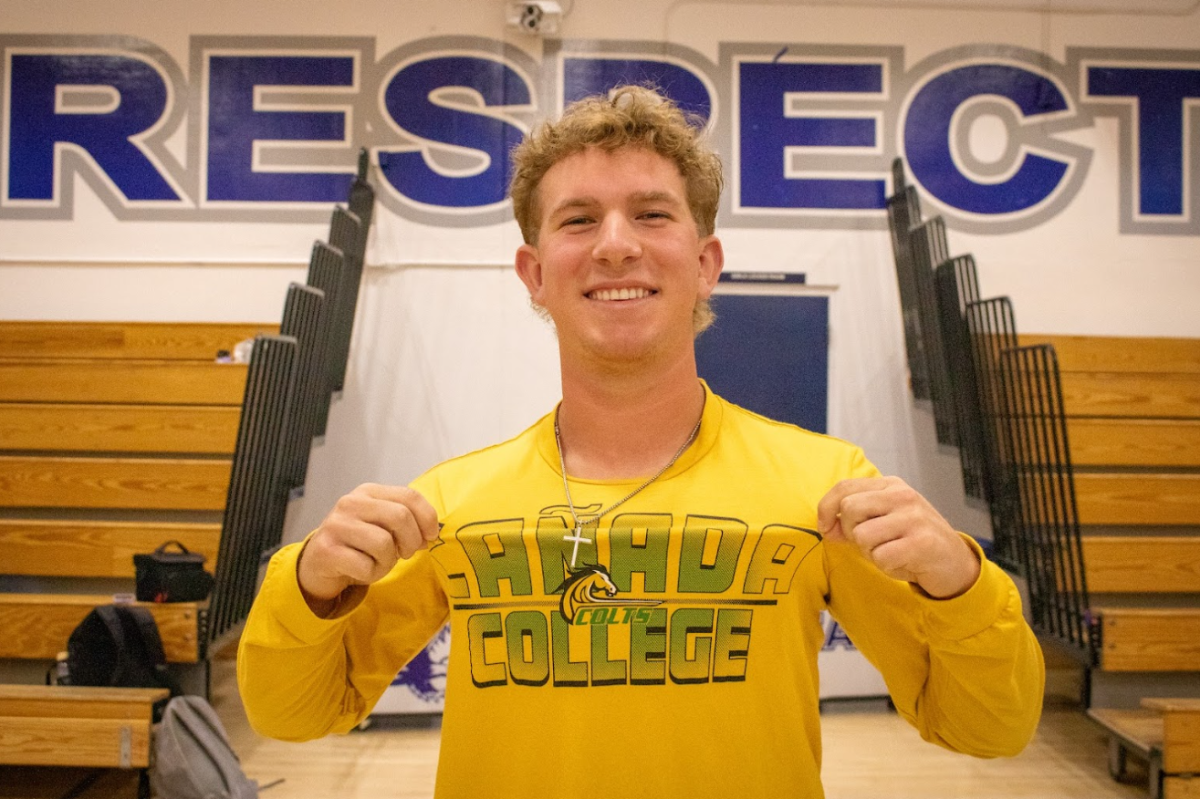For horseback riders at the school, getting ready for practice means putting on leather boots, a velveteen helmet and mounting a massive four-legged animal.
Equestrianism, or “ horseback riding” as it is more often known, is one of the oldest sports in the world still practiced today. Originating mostly from Western European countries, the sport has a variety of components, such as jumping and vaulting.
Competitions, called “eventing”, take place over one to four days, and involve three stages: dressage, cross country and show jumping. Riders must execute a precise series of movements, and are judged based on smoothness, rhythm and obedience of the horse, and many other factors.
“Competing is very overwhelming, but awesome,” sophomore Kyra Kilman said. “The atmosphere is super crazy…To prepare myself before I go into the arena, I try to picture myself back at the barn where I’m just riding for fun and have no stress.”
Horseback riding made its debut at the 1900 Summer Olympics in Paris, France. There are also several professional horseback riding teams worldwide.
However, equestrianism can be enjoyed by people of all ages and abilities. According to many riders at the school, the essence of the sport lies in the unique relationship riders have with their horses, and is what entices many athletes to start riding.
“My grandmother would always take me to the Stanford barn and show me all the horses they had there,” senior Casey Charlton said. “I remember not wanting to leave that place, which seemed so odd considering it reeked of horse manure and dry hay, but I loved it anyway. I wholeheartedly fell in love with horses because they seemed so likeable and genuinely compassionate.”
Executing tasks with the animal requires riders to build trusting relationships with their horses, which can be challenging at times.
“The horse has a mind of its own, so you have to control it,” junior Andrea Lucia said. “It’s difficult because it can do whatever it wants, ignore you and not cooperate.”
However, coordination between a rider and their horse is essential.
“To be a truly successful rider you and your horse need to work as a team,” junior Emma Perry said. “This is important because it teaches you that no matter who is in the superior position you should never abuse your power to get what you want.”
Although the sport is enjoyed by a wide range of people, equestrianism has a number of demanding requirements.
“It’s not really something you can just go and do in your free time, like go running, or play some soccer in the park. You need equipment and space and a large animal, which also has needs,” junior Elise Jacobsen said.
Nor does it appeal to the general public in the same way that some other sports may.
“I think that it isn’t as popular as some other sports because it does not supply to viewers the same animalistic instincts that games such as soccer, football and hockey do,” Emma said. “Those games are fun to watch because the people playing are so heated and guided by their need to get the ball or puck and the need to hinder the other team at the same time.”
Equestrianism is also one of the most costly sports to play. The expense associated with the sport limits the number of people who can participate, making it less common than other sports.
“It’s expensive to maintain [a horse], buy all the stuff for it, like food, saddles and bridles,” Andrea said. “The shows are expensive, the clothes you wear to ride your horse are expensive, everything [is expensive].”
In spite of the difficulty of being a rider, a common misconception that persists in surrounding equestrianism is that it is not truly a sport. Andrea recounts an incident where she was talking to a man she had just met, and they started discussing horseback riding in the Olympics.
“[The man said] they shouldn’t have horseback riding in the Olympics, that’s not a sport,” Andrea said. “He didn’t know I rode…my dad [told him] it’s actually a lot harder than it looks.”
Contrary to this widespread misconception, hours of practicing tricks requires much more athleticism than many would assume.
“I would say that I get just as much of a physical and mental workout during an hour of riding as I do playing an hour of soccer,” Emma said.
Physical exhaustion isn’t the only challenge that riders are forced to deal with. Equestrianism also necessitates an unrivaled mental intensity that comes in the form of working with one’s horse.
“The hardest thing is learning to work together with the horse,” Kyra said. “Because there are two different brains involved, sometimes the horse and I will have different ideas on what to do.”
Even for those who don’t compete, many equestrians claim that riding is an experience that provides a sense of fulfillment and contentment.
“When one is around a horse, on some insane level, they feel as though they have someone by their side who weirdly understands them,”Casey said. “Whenever I have a rough day at school, I know I can go to the barn and ride off my steam.”








